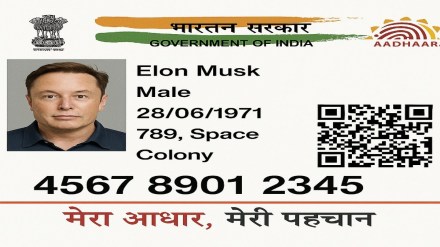AI generated fake Aadhaar card misuse: Aadhaar cards, issued by the Unique Identification Authority of India (UIDAI), are a crucial form of identity for Indian residents. But with the launch of GPT-4o’s image generation feature by OpenAI, this once-secure document is facing a new and unexpected challenge—artificial intelligence. Since GPT-4o’s debut, users have generated over 700 million images—some eerily resembling real Aadhaar and PAN cards—raising serious concerns about potential misuse.
Fake Aadhaar cards surface on social media
In a troubling trend, social media users have begun sharing images of AI-generated Aadhaar cards featuring their own photos. While facial features may not always be perfect, key elements like layout, fonts, and format appear highly realistic. One user even shared an Aadhaar card image of Elon Musk—so convincingly rendered it resembled an official government document.
just the photo is bad, rest looks realistic. 😮 pic.twitter.com/eOYQlY8cyb
— Innocentgoku (@iGakureo) April 4, 2025
How do fake Aadhaar cards work?
To assess the risk, a test using ChatGPT’s image generation tool was conducted. The result was startling: the generated Aadhaar-like cards were difficult to distinguish from the real thing at a glance. OpenAI has acknowledged these concerns in its GPT-4o system card, admitting that the new model poses a higher risk of misuse than previous versions like DALL·E.
PAN cards also at risk?
The risk isn’t limited to Aadhaar. Users have reported generating highly realistic fake PAN cards as well. While Aadhaar has a robust backend verification system, experts warn that verifying other documents such as PAN cards and driving licences could prove more challenging—highlighting a growing need for improved digital safeguards.
What makes GPT-4o different?
Unlike earlier DALL·E models, GPT-4o uses a native autoregressive model that enables it to generate images directly within ChatGPT using natural language prompts. OpenAI admits this architectural shift introduces “new capabilities and new risks,” particularly in areas like identity fraud.
Is OpenAI safeguards?
OpenAI has imposed restrictions on generating photorealistic images of children, public figures, and explicit or violent content. However, there are currently no explicit limits on creating realistic templates of government-issued IDs. As the line between innovation and exploitation blurs, experts stress the urgency of stronger regulatory frameworks and AI governance.
